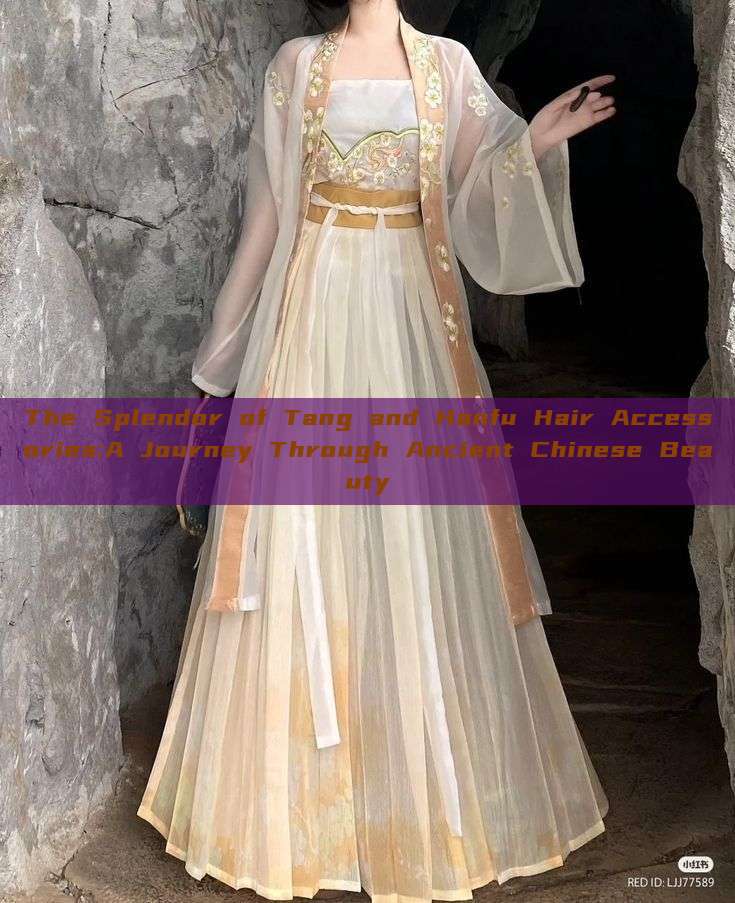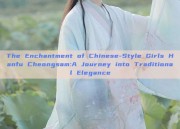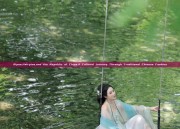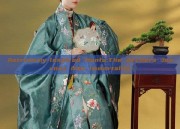The Splendor of Tang and Hanfu Hair Accessories:A Journey Through Ancient Chinese Beauty
In the annals of history, the Tang and Han dynasties not only left an indelible mark on Chinese culture and politics but also contributed significantly to the evolution of fashion and aesthetics. Among the myriad of styles that emerged during these eras, the hair accessories were particularly noteworthy, reflecting the essence of beauty and culture in ancient China. This article delves into the fascinating world of Tang and Hanfu hair accessories, examining their influence on fashion and the intricate details that characterized them.

The Tang Dynasty (618-907 AD), a period of prosperity and cultural exchange, witnessed a flourishing fashion industry. Hairstyles during this era were bold and extravagant, with men and women alike indulging in intricate hair designs. Hair accessories, therefore, played a pivotal role in enhancing these styles. Combs, hairpin flowers, and hair nets were some of the most popular hair accessories during this period. These accessories were often made of precious materials like jade, gold, and silver, and were adorned with intricate carvings and designs.
Combs were not just for styling but also served as symbols of status and wealth. The intricate designs on these combs reflected the craftsmanship of the era and were often inlaid with precious stones or pearls. Hairpin flowers were a unique feature of Tang-era fashion, with flowers made of silk or other materials being fixed onto hairpins to create beautiful and elegant designs. These hairpin flowers not only enhanced the beauty of the hair but also served as symbols of love and beauty.
The Hanfu fashion, which originated during the Han Dynasty (206 BC – 220 AD), is a traditional Chinese clothing style that emphasizes simplicity and elegance. Hair accessories during this period were equally simple yet elegant, reflecting the cultural values of the era. Hair was often tied up in knots or rolls, with silk scarves or ribbons used to secure them. These scarves or ribbons were often brightly colored and matched the clothing, adding a touch of color and vibrancy to the overall ensemble.
One of the most distinctive features of Hanfu hair accessories was the use of hairpins. These hairpins were often made of wood, jade, or metal and were adorned with intricate carvings or designs. They not only served to secure the hair but also added a touch of elegance to the hairstyle. Another notable hair accessory during this period was the hairpin flower, which was similar to its Tang-era counterpart but had a more delicate and elegant design.
During both eras, hair accessories were not just about fashion or beauty but also served as symbols of social status, culture, and identity. The materials used in making these accessories, their designs, and the way they were worn all spoke volumes about the wearer’s status and cultural identity.
The influence of Tang and Hanfu hair accessories on modern fashion is evident. Many modern hairstyles and hair accessories can be traced back to these ancient styles. The use of combs, hairpins, and hair scarves in modern fashion is a testament to the enduring influence of these ancient hair accessories. Moreover, the elegance and simplicity of Hanfu hair accessories have inspired many designers to create modern versions that are both traditional and contemporary.
In conclusion, Tang and Hanfu hair accessories are not just about fashion or beauty but are a reflection of ancient Chinese culture and aesthetics. They serve as symbols of status, culture, and identity and have influenced modern fashion in significant ways. As we delve into the world of these ancient hair accessories, we are not just witnessing the beauty of the past but also understanding the essence of beauty that has been passed down through generations.
This article has delved into the fascinating world of Tang and Hanfu hair accessories, examining their influence on fashion, their cultural significance, and their evolution over time. It is hoped that through this article, readers will gain a deeper understanding and appreciation for these ancient hair accessories and their contribution to the beauty and culture of China.
Related Recommendations
-

The Enchantment of Chinese-Style Girls Hanfu Cheongsam:A Journey into Traditional Elegance
-

Qipao,Hairpins,and the Republic of China:A Cultural Journey Through Traditional Chinese Fashion
-

The Graduation Gown and the Horseface Skirt Set:A Journey Through Student Performance Fashion
-

Astronomy-Inspired Hanfu:The Archers Journey into Immortality


